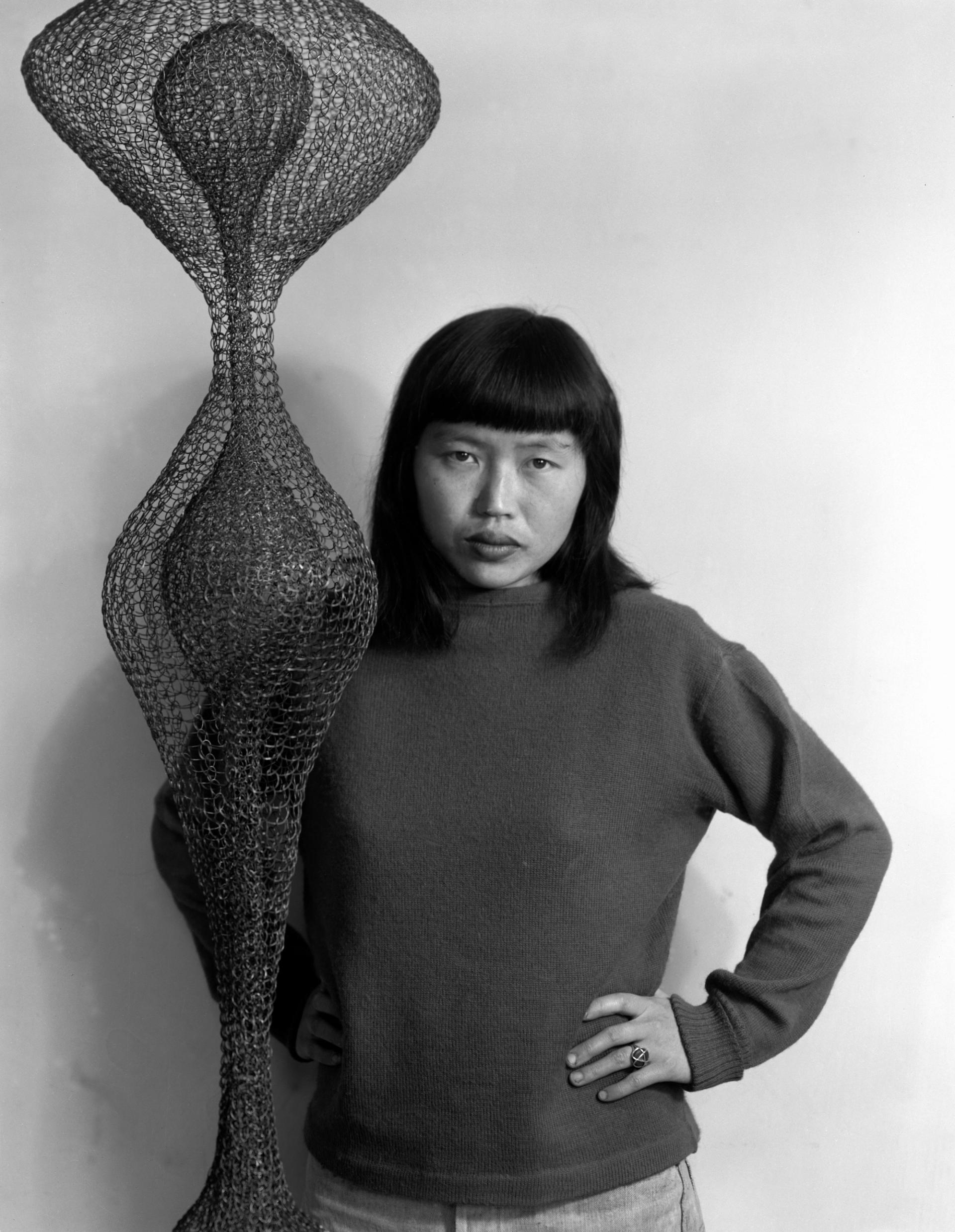Japanese American Artist Awarded the National Medal of Arts
By Camilla Alvarez-Chow

Portrait of RUTH ASAWA with hanging wire sculpture, 1951. Photo by Imogen Cunningham. Courtesy Ruth Asawa Lanier and David Zwirner, New York.
Modernist sculptor Ruth Asawa (1926-2013), who was imprisoned in a Japanese American internment camp during World War II, was posthumously awarded the National Medal of Arts by United States President Joe Biden on October 21. The award is the most prestigious bestowed by the US government to honor individuals or groups for “their outstanding contributions to the excellence, growth, support, and availability of the arts.”
As an artist, educator, and arts education advocate, Asawa is best known for weaving metal wire into intricate, abstract sculptures and for numerous public art projects and fountains across the San Francisco Bay Area.
Born and raised in California, Asawa was one of 120,000 Japanese -Americans sent to an internment camp in the southeastern state of Arkansas during the height of the Second World War in 1942. She also faced racial prejudice during her subsequent education at the Milwaukee State Teachers College (now University of Wisconsin, Milwaukee), which barred her from earning her degree due to her Japanese heritage. Nevertheless, from 1946 to 1949 Asawa joined the artistic community at Black Mountain College in rural North Carolina. The program was led by Bauhaus members Josef Albers and Anni Albers, and it was there that she began making her woven wire sculptures after a trip to Mexico. She went on to become a singular artist, with her works receiving international acclaim beginning in the 1950s and ʼ60s.
The National Medal of Arts was accepted by Asawa’s daughter, Addie Lanier, with Asawa’s son Paul Lanier, and grandson Henry Weverka. Ruth Asawa’s work is held in the permanent collection of renowned institutions such as the San Francisco Museum of Modern Art and the Museum of Modern Art in New York.
Camilla Alvarez-Chow is an editorial assistant at ArtAsiaPacific.








